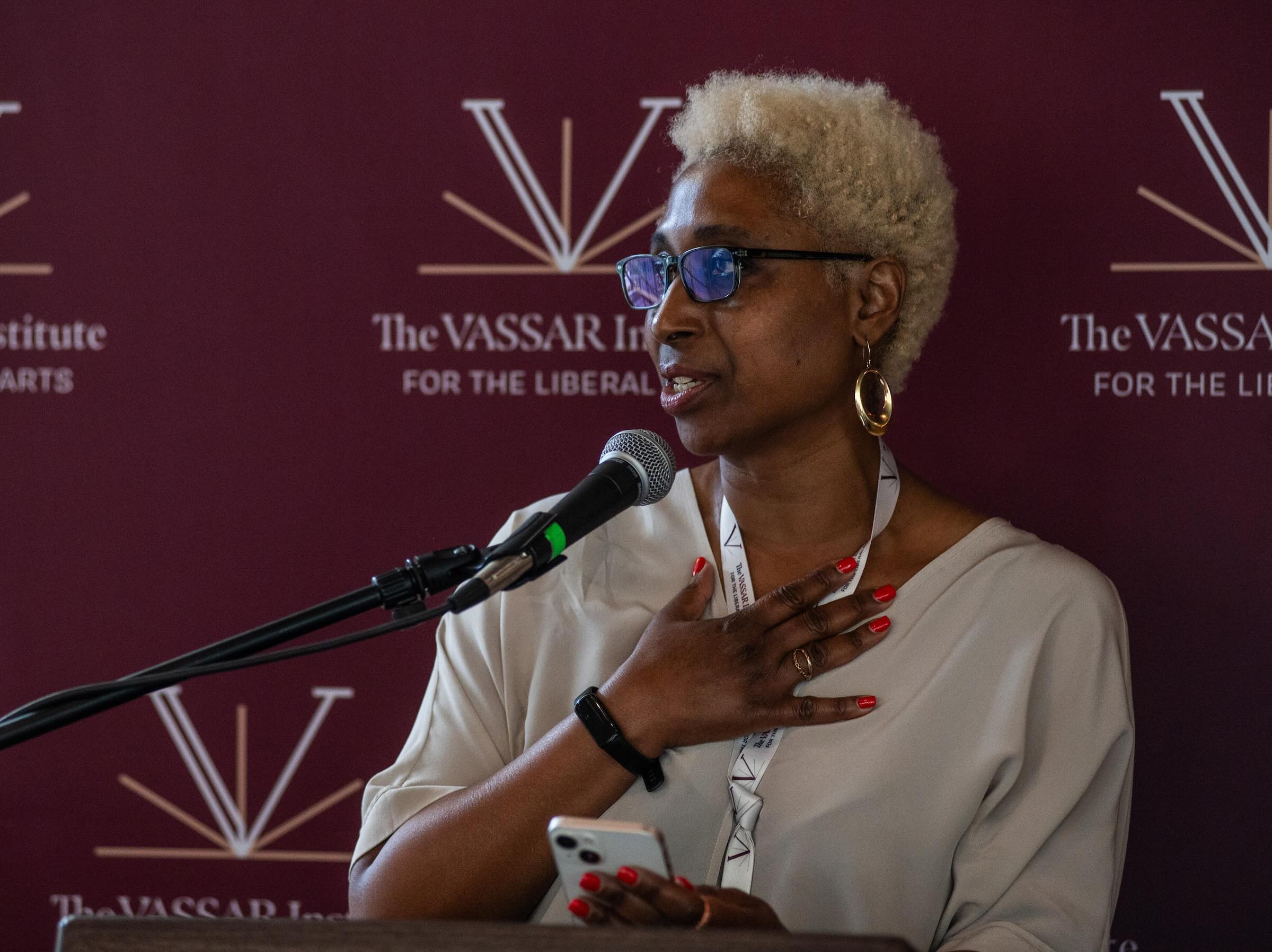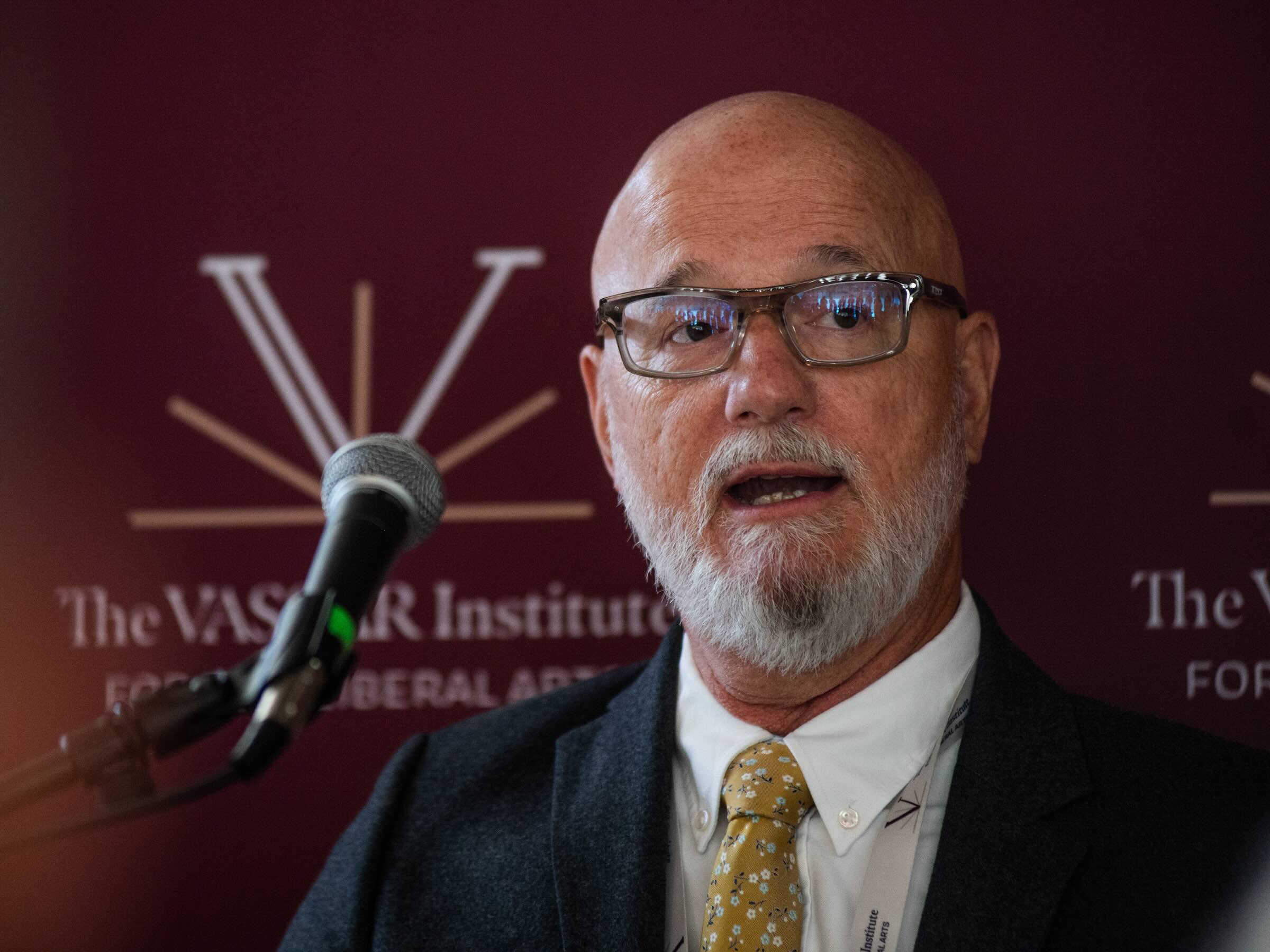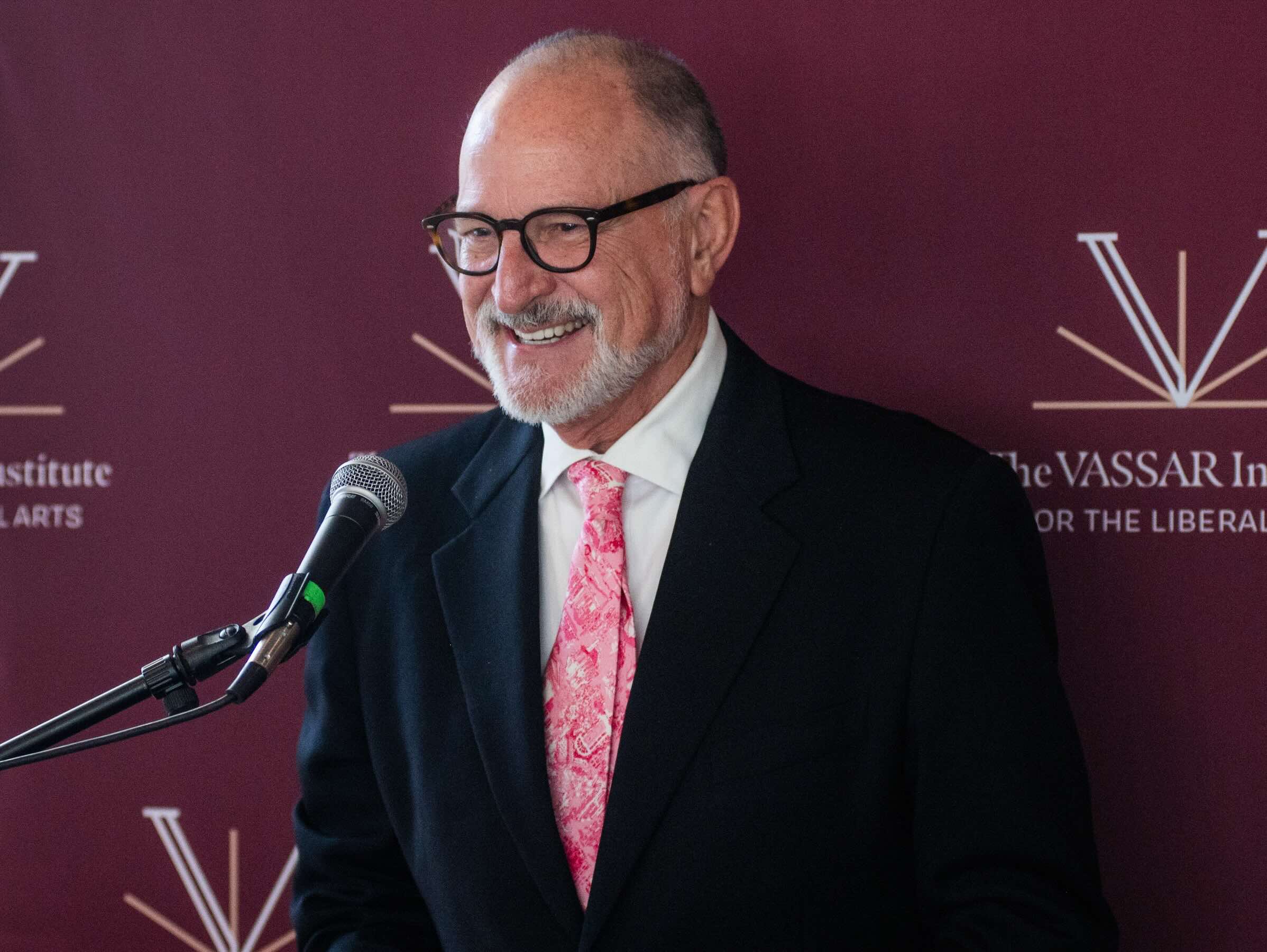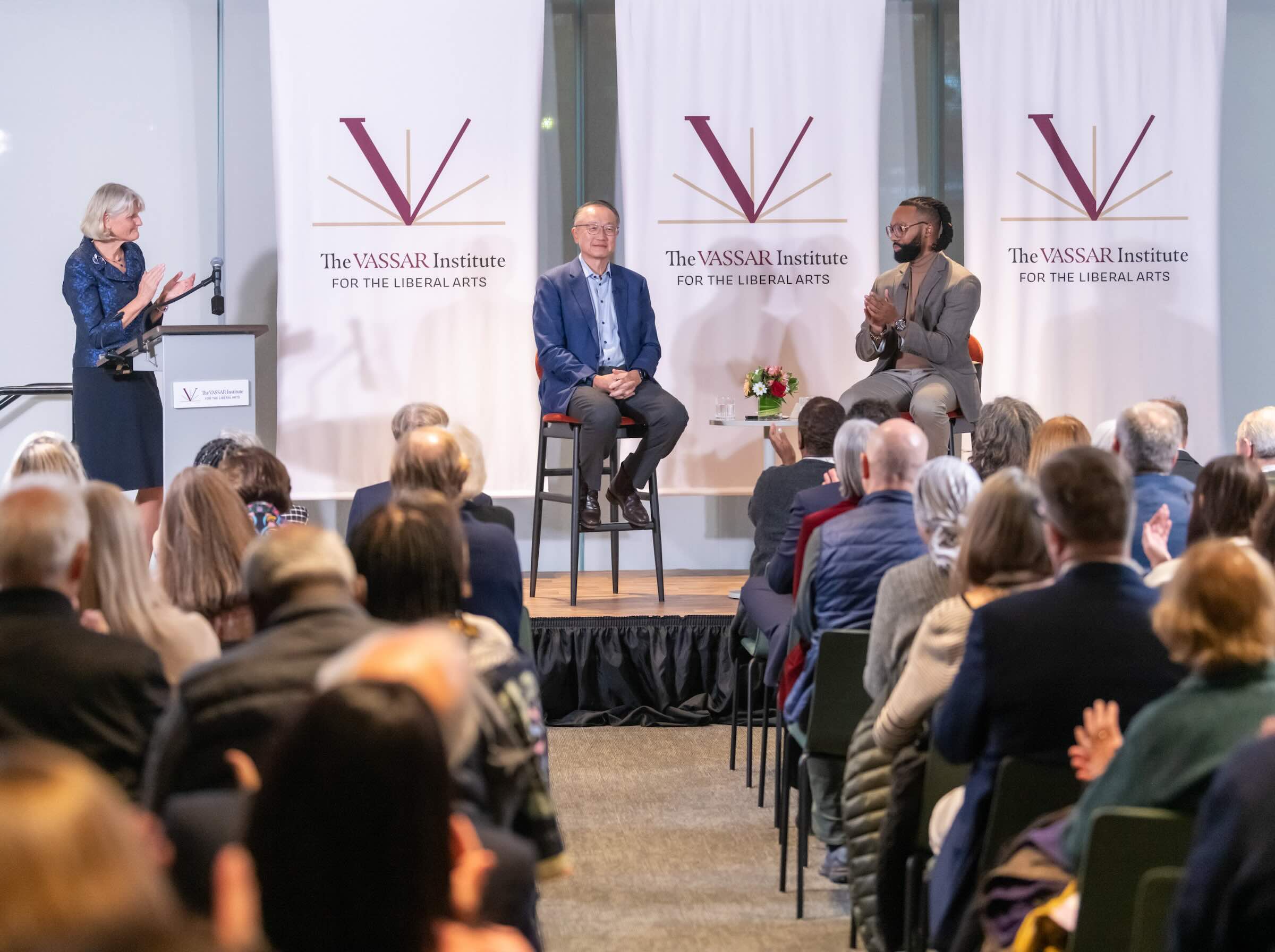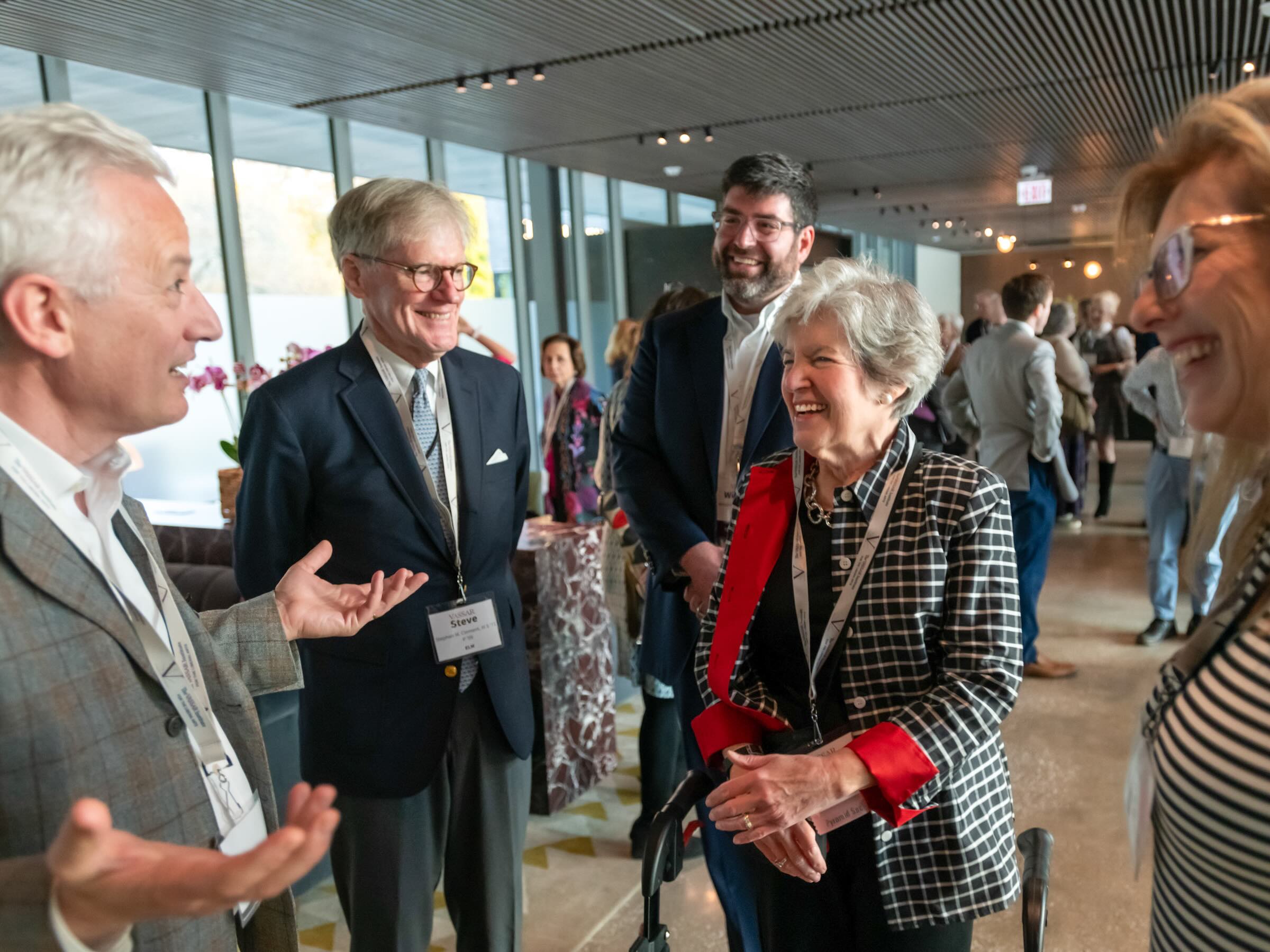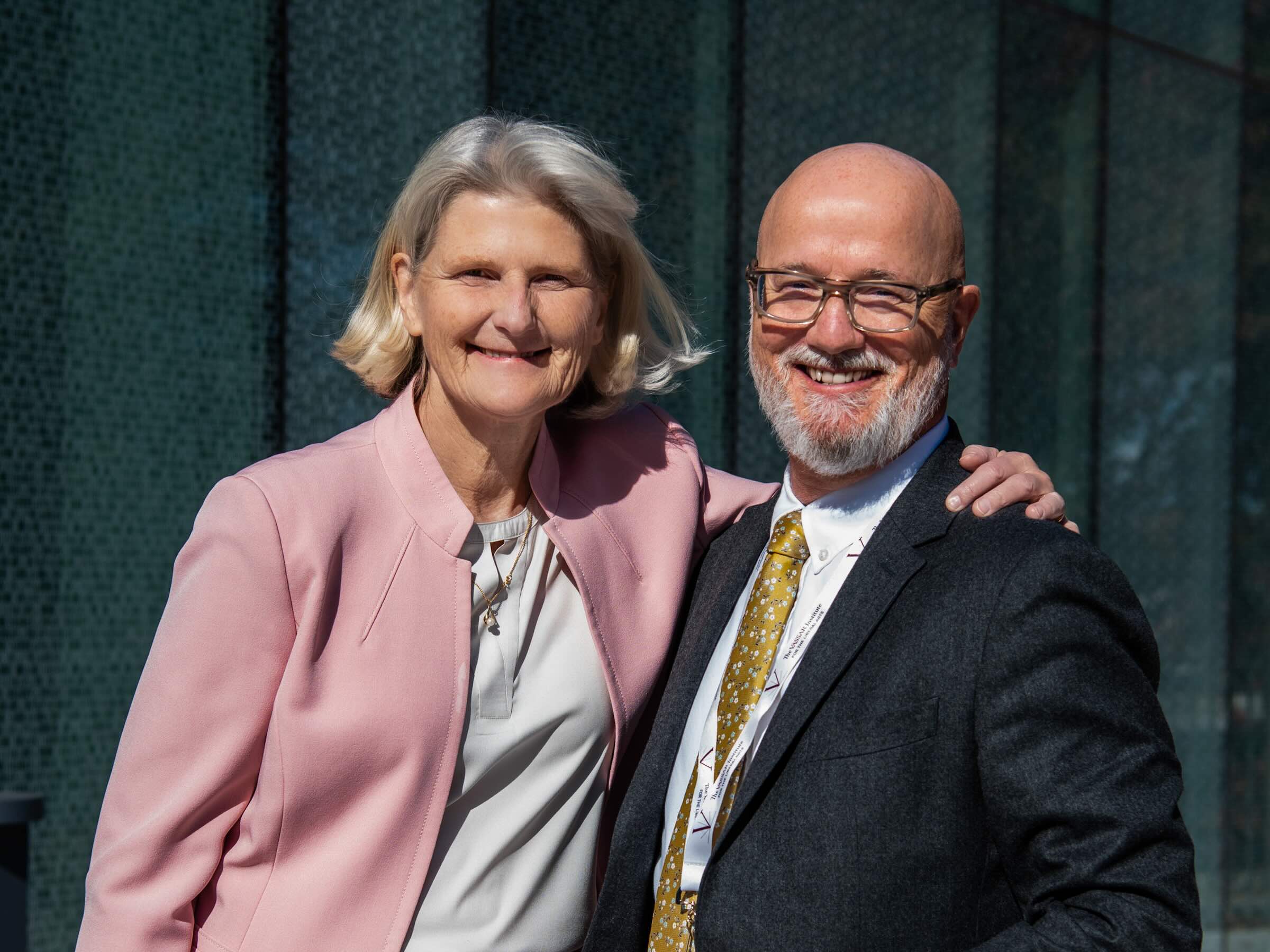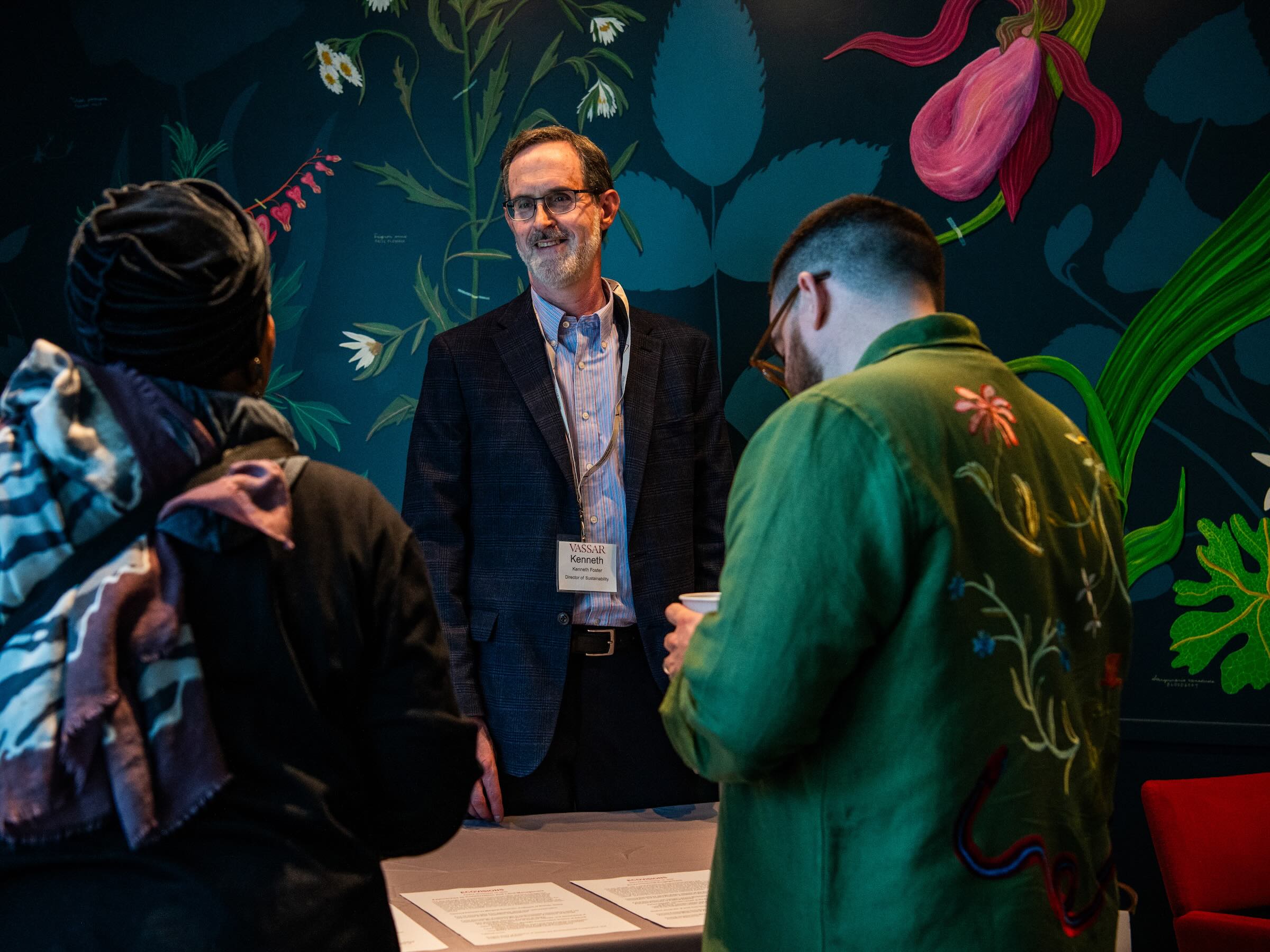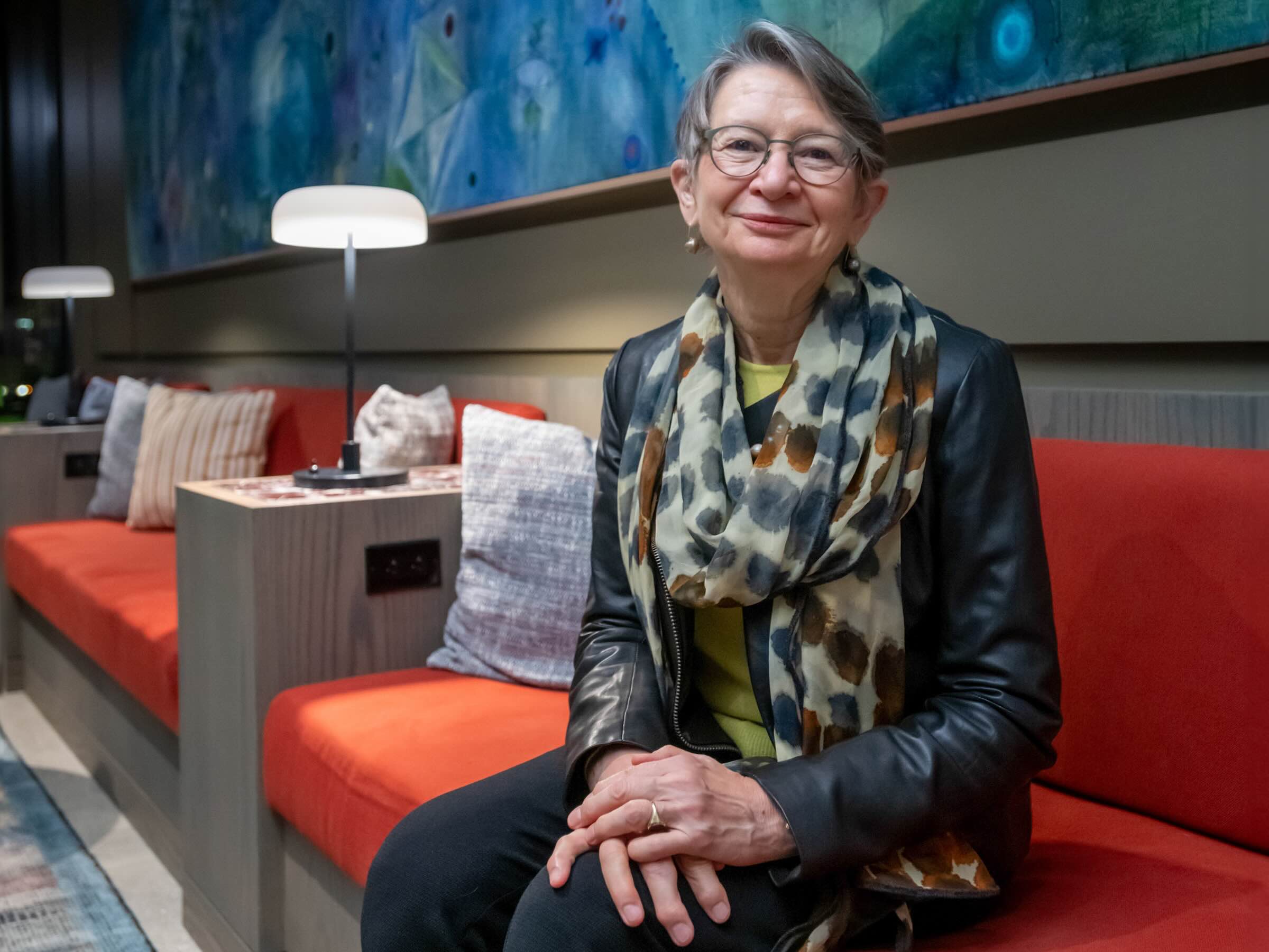Vassar Institute for the Liberal Arts Launches with a Ribbon Cutting and Two Days of Thought-Inspiring Conversations
Wielding an oversized pair of scissors, President Elizabeth H. Bradley officially opened The Vassar Institute for the Liberal Arts on October 26 before a crowd of more than 160 members of the Vassar and wider community. And while the ribbon-cutting ceremony lasted only a few minutes, Bradley alluded to the nearly 10 years of planning and negotiating that had preceded it. “It has been a long time in coming,” she said, “and we have learned so much along the way.”
See highlights from the ribbon-cutting ceremony and hear what our speakers had to say about the impact of The Vassar Institute.
Located on Raymond Avenue adjacent to the campus and just down the hill from Alumnae House, the state-of-the-art building contains guest rooms in the boutique hotel, The Heartwood at Vassar; and a restaurant, The Salt Line Hudson Valley; in addition to meeting rooms in the Institute, which will accommodate gatherings designed to spark dialogue on a wide variety of topics in the coming months and years. The weekend celebration was marked by three such discussions, one on October 25 on the role of a liberal arts approach to addressing global challenges and two others—one that explored the future of work and another on the role of architecture in promoting sustainable communities—that followed the October 26 ribbon-cutting. The discussions were videotaped and appear below.
President Bradley said she expected the Institute to serve as a place that will celebrate the College’s liberal arts approach to learning “beyond its campus and undergraduate students to engage broader audiences in conferences, workshops, and events—all in the service of learning, finding new connections and building an inclusive community.”
Speaking at the ribbon-cutting ceremony, Board of Trustees Chair Sharon Chang ’84 P’19 noted that she had been involved in the planning of the Institute almost since she first joined the board in 2017. When she arrived on campus earlier this week in anticipation of the event, she was overcome with emotion. “I’m thrilled by the bold, innovative thinking that went into this project, and together we navigated some uphill battles to get it completed,” Chang said. “When I saw the signs pointing to the building, I teared up—and I’m tearing up now. This is groundbreaking. This is Vassar.”
The inaugural Faculty Director of the Institute, Robert K. Brigham, Professor of History and International Relations on the Shirley Ecker Boskey Chair, said he and his staff are anxious to get to work. “You have given us this shiny new thing, and now we are going to make it fly,” Brigham said. “This is a place where we dream big, where we do things to solve problems and change lives.”
The architect for the project, Frederick Fisher of Frederick Fisher and Partners, based in Los Angeles, called the opening of the building a day every architect looks forward to. “I have been involved in this project for seven years,” Fisher said. “It has been guided by the intelligence and imagination of President Bradley and her team, and you can’t do good work without a good client. Architecture is a team sport, and I had a talented team working with me that made this project what it is.”
View highlights from The Vassar Institute launch. A full gallery of photos can be found at the end of the article.
On Friday evening, Wesley Dixon, Deputy to the President of Vassar and the Vassar Institute’s program director, interviewed Jim Kim, former advisor at the World Health Organization and former President of the World Bank. He is currently Chancellor of the University of Global Health Equity, an innovative medical school in Rwanda, which partners with Vassar in global liberal arts education.
Kim was instrumental in organizing efforts by the World Health Organization to address the HIV/AIDS crisis in Africa at the start of the century. He said his background as an anthropologist who took a liberal arts approach to problem-solving had helped him and others at WHO develop a plan to treat HIV patients in Africa.
“We’d learned enough of the specifics to be able to go out and say, ‘Look what you’re saying, that it’s impossible, you don’t know that because nobody’s ever tried,’” he said. “We tried it at a small scale in Haiti and then we went right to the moral argument. We said, ‘On content, you’re wrong. We think it is possible. But from a moral perspective, if we let 25 million people living in Africa with HIV die, we’ll forever be remembered as a generation that turned our backs on 25 million people.’”
Watch the keynote conversation “A Life in the Liberal Arts,” which aired as an episode of the Conversations @ the Salt Line podcast.
Kim said he wholeheartedly supported Vassar’s decision to create the Institute. He said he liked “the fact that you would do this, that you would build an institute defending, celebrating, preserving liberal arts as a fundamental idea. The liberal arts are under threat; there’s less of a sense of the importance of what a liberal arts education does in terms of content, pedagogy, and culture.
“The most difficult problems of the day require being able to think across multiple dimensions, multiple disciplines,” Kim continued. “I just had this long conversation with the head of a group that’s trying to rethink artificial intelligence, and it’s an incredibly illustrious group. They told me that they reached out to me because they want to think about the broader social implications of what they’re doing. The fact that you guys here are embracing the liberal arts gives me hope.”
The panel on the future of work was moderated by New York Times Pulitzer Prize-winning reporter Steve Lohr P’17. Lohr was joined by Maria Flynn, President and CEO of the national nonprofit Jobs for the Future, and Aneesh Raman, Chief Economic Opportunity Officer at LinkedIn. Flynn and Raman recently co-authored an op-ed in The New York Times that focused on the need for a liberal arts approach to successfully navigating a rapidly changing job market. Raman predicted that by the year 2030, more than 70 percent of all jobs will change dramatically or cease to exist. “Robots will perform the physical labor, and artificial intelligence will replace many intellectual jobs,” he said, “but we’re missing a critical piece. Our social abilities are not covered, so there will be an emerging and growing value on people skills, managing people instead of managing work. All of that change will be anchored on skills that the liberal arts teach.”
Watch the keynote conversation "Liberal Arts and the Future of Work.”
The final panel of the day, “Architecting a Sustainable, Community-Oriented Future,” was moderated by Professor of Art Yvonne Elet. Elet was joined by the Institute’s architect, Fred Fisher; Vassar alum Karen Van Lengen ’73, a practicing architect and architecture professor at the University of Virginia; and Caroline Alsup, an architect who is serving as Headquarters Project Manager at Scenic Hudson, a local nonprofit organization that promotes sustainable growth in the Hudson Valley. All of the panelists agreed that The Institute for the Liberal Arts can play a role in fostering dialogue that promotes best practices in building and urban planning.
View the panel "Architecting a Sustainable, Community-Oriented Future.”
Saturday afternoon, attendees engaged in a dynamic exploration of upcoming Signature Programs. The students, faculty, and community residents who will host them stood ready at tables sprinkled throughout the Institute to provide previews of future forums. One of the presenters, Molly Shanley, Professor Emerita of Political Science, will co-host a two-day conference that will explore ways of promoting partnerships to increase graduation rates in Poughkeepsie area schools. Shanley will be joined by Associate Professor of Political Science Taneisha Means, Professor of Education Erin McCloskey, and Assistant Professor of Mathematics and Statistics Andy Borum.
Shanley said she is grateful to have the opportunity to launch the project at the Institute on January 24 and 25, 2025. “We plan to promote collaboration among all of our local colleges and to work with area nonprofit organizations, school officials, parents, and others in the community to learn more about what they need to succeed,” Shanley said. “Once we gather this information, we hope to be able to secure a major grant to put these ideas into practice. Our conference at the Institute will be the first step in this process.”
Outside of the Institute, students protested to urge the administration to divest from military investments. After the Friday evening panel, President Bradley asked audience members how many had ever participated in a protest. A majority of the hands went up. Engaged Pluralism is an ethos at Vassar, she assured those in attendance, and it includes the right to make one’s voice heard, even in the face of differences.
The Institute is expected to be a place where thought leaders, academics, and students alike can exchange ideas and discuss the most pressing issues the world faces today. Photographer Andrea Baldeck ’72, who attended the Vassar Institute launch event, said she supported all of its creators’ goals.
“This place represents a whole new dimension for Vassar,” she said. “It embodies the values we all hold but takes it to a whole new level of community engagement. How marvelous to be able to open your brain to engage with like-minded people as well as people you may disagree with, to have meaningful dialogue on meaningful topics.”
Baldeck is one of several alums whose artwork is on display throughout the building. “I was so pleased to be asked to provide some of my work to this project,” Baldeck added. “I hope some of the photographs provide some serenity to guests here, and you always hope your ideas will spark others to take those ideas elsewhere.”
View a gallery of photos from the launch of The Vassar Institute for the Liberal Arts.

